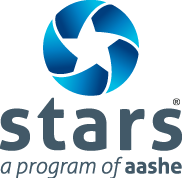Log in with your AASHE Account
To access the STARS Reporting Tool, your institution must be registered and you must be listed as a user by your institution's STARS Liaison. To access Content Displays, your organization must be an AASHE member or have a STARS subscription.
Forgot your password?
No worries, click here to reset your password.
Don't have an AASHE account?
Create one now. Anyone with an email address from a member organization can access our member-only resources.
Not affiliated with a participating institution?
Learn more about getting started with STARS. If your institution is already registered, ask your institution's STARS Liaison about access or email stars@aashe.org.
If you are a student or researcher who is not affiliated with a participating institution, you can also request temporary access to STARS data.
